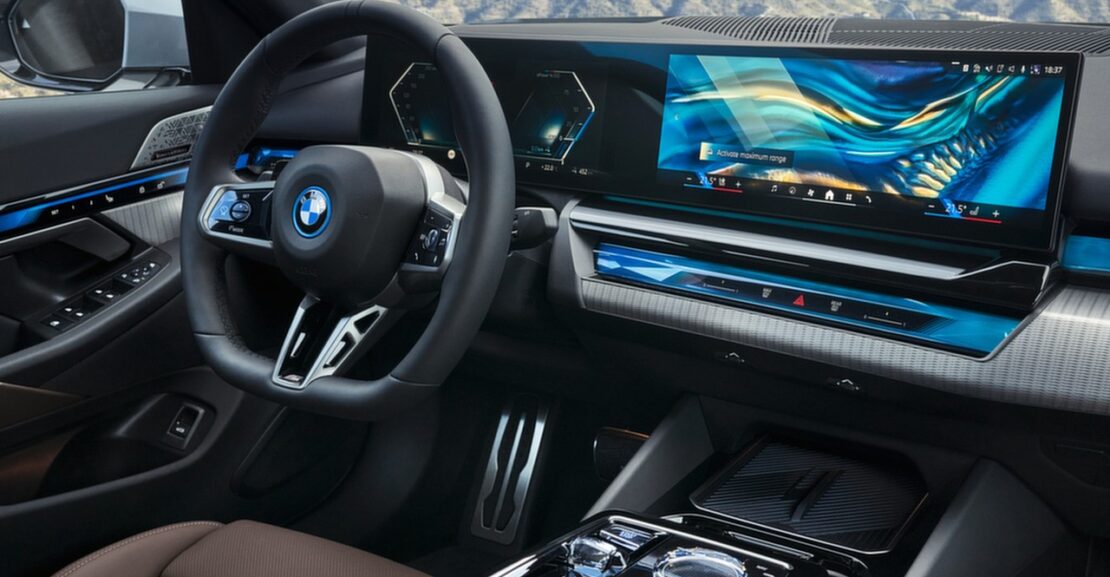WHAT IS BMW IDRIVE?
While not strictly classified as software companies, automakers often take pleasure in providing distinct infotainment interface variations within their vehicles. These interfaces can occasionally be excessively intricate and challenging to navigate, particularly while driving. Nevertheless, the majority of companies have mastered the fundamental principles. BMW employs a software system known as iDrive, which has evolved through several generations of technology. It encompasses a range of features across different screen sizes and vehicle models.
ORIGINS OF BMW iDRIVE
iDrive had its genesis in the early 2000s, making its inaugural appearance in the 7 Series. In its initial iterations, the system leaned on Microsoft Windows technologies for certain features, and navigation systems relied on CDs to access map data. As is the nature of technological evolution, the past two decades have witnessed rapid progress, transforming iDrive into a platform that boasts a spectrum of features and functionalities that were once mere fantasies during its debut.
In the present day, iDrive serves as the central command for virtually every facet of BMW’s vehicle architecture, ranging from audio systems to chassis dynamics and drivetrain settings. The reach of iDrive extends beyond BMW, with Rolls-Royce and Mini vehicles also incorporating the system. Additionally, variations of the iDrive system can be found in vehicles like the Toyota Supra and others that leverage BMW powertrains.
BMW iDRIVE BASICS
BMW articulates its software philosophy as adhering to the “act, locate, and inform” principles, strategically placing information in easily accessible areas while minimizing redundancy. This approach ensures a seamless experience across various displays found in many BMW vehicles, such as infotainment screens, digital gauge clusters, and head-up display systems, preventing potential confusion.
The iDrive interface incorporates Apple CarPlay and Android Auto seamlessly and introduces additional features, including a subscription-based dash camera system. Depending on the specific vehicle model, iDrive extends its functionality to offer insights into the electric vehicle battery’s state of charge or provide specific driving modes tailored for performance. Users can interact with the system through touch, voice commands, gestures, or the centrally positioned rotary controller on the console.
A notable component of iDrive is the BMW Intelligent Personal Assistant, designed to emulate a “human-like manner” with advanced functionalities. This assistant can answer queries, manage vehicle functions, and respond individually to the occupants in the front seat. The visual displays adapt to different driving modes, featuring fiery and sharp graphics for sports settings and calming, glowing shapes for efficiency modes. An individual mode allows drivers to personalize their preferred graphics and driving dynamics.
MY BMW COMPANION APP
For owners with compatible smartphones, the My BMW app provides real-time access to crucial vehicle information such as tire pressure, fuel and battery charge levels, and location data. Through the app, owners can remotely lock and unlock their vehicle and initiate the engine start, if the vehicle is equipped accordingly. Climate temperatures can be preset, and memory seating configurations can be adjusted from the app. Additionally, BMW facilitates software update notifications that can be initiated remotely through the app’s interface.
The app’s functionality extends to serving as a digital key, contingent upon the compatibility of the owner’s smartphone. Certain BMW models even allow owners to share access with up to five other individuals.
Beyond basic vehicle controls, the My BMW app opens up a spectrum of connected services, including access to a BMW concierge, online data for fuel prices, news, and weather. Owners can preconfigure maps and driving destinations directly from their smartphones. Many BMW models are equipped with an eSIM that can be activated on any cellular network. Notably, the app offers a feature allowing owners to view a 3D image of their parked vehicle.
BMW iDRIVE FOR 2023 AND BEYOND
In the 2023 update, BMW has introduced changes to iDrive that primarily focus on enhancing information organization and system flow, rather than making substantive functionality changes. This approach is termed a “zero-layer” strategy, emphasizing data proximity to the surface, allowing users to accomplish most tasks with just a tap or two. The updated interface utilizes widgets placed within a single menu on the home screen, providing direct access to music, contact lists, vehicle settings, and more. Graphics adapt to drive-mode selections, enhancing the overall user experience.
The iDrive 8.5 system for 2023 typically employs a dual-screen layout across curved displays and currently operates on the Linux platform. Anticipated in 2024 is a significant software update that is expected to further enhance the system’s capabilities.
BMW has announced a future shift for iDrive to Google’s Android Automotive, a move aimed at bringing additional connected functionality. This transition will integrate Google Assistant, Maps, and other functions into the interface. Moreover, there are plans to incorporate artificial intelligence to provide owners with a more personalized and streamlined experience. While iDrive already supports over-the-air updates, the upcoming changes will expand connectivity, introducing more robust personal assistance features and concierge functions.

